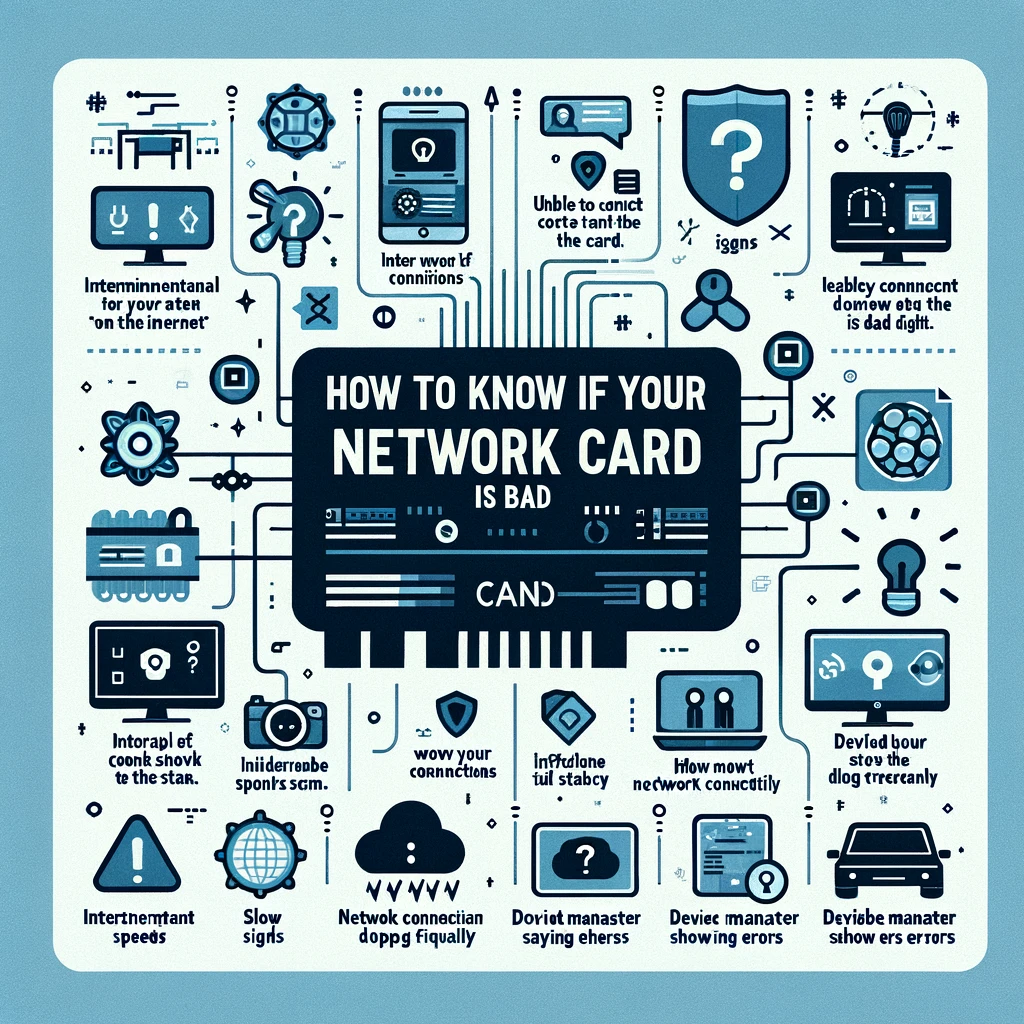Learn how to identify a bad network card and troubleshoot the problem before it becomes a major headache. Expert advice provided!
How To Know If Your Network Card Is Bad.

Determining if your network card (also known as a network interface card or NIC) is malfunctioning involves several steps. Here’s a basic troubleshooting guide to help you identify if your network card is bad:
- Check Physical Connections:
- Ensure that the network cable is properly connected to your computer and router or modem.
- Look for visible damage on the cable and the network card itself.
- Check Network LEDs:
- Most network cards have LED indicators. Check if they are blinking or lit up when the cable is connected. A lack of activity could indicate a problem.
- Restart Your Computer and Networking Equipment:
- Sometimes, simply restarting your computer, router, and modem can resolve temporary network issues.
- Check Device Manager (Windows) or Network Settings (Mac/Linux):
- On Windows, go to Device Manager and look for your network card under “Network adapters.” If there’s a yellow exclamation mark, it could indicate a problem.
- On Mac or Linux, check network settings to see if the system recognizes the network interface.
- Update or Reinstall Network Card Drivers:
- Outdated or corrupted drivers can cause network issues. Updating or reinstalling the drivers often resolves these problems.
- Try a Different Port or Cable:
- Sometimes the issue is with the cable or the router/modem port. Try using a different Ethernet cable or another port on your router/modem.
- Test with Another Device:
- Connect another device to the same network cable and port to see if it can access the internet. If it can, the problem might be with your network card.
- Check for System Conflicts or Errors:
- Look for network-related errors in the system logs or event viewer.
- Run Network Diagnostics:
- Many operating systems have built-in network diagnostics. Run these to see if they identify any issues.
- Consult with a Professional:
- If you’re still having trouble, it might be time to consult with a professional technician.
Remember, these are general steps, and the specifics can vary depending on your computer’s operating system and the type of network card you’re using. If your network card is integrated into your motherboard (which is common in many laptops and some desktops), replacing it can be more challenging and might require professional assistance.
Certainly! Here’s a table outlining the steps to determine if your network card is malfunctioning:
| Step | Description |
|---|---|
| 1. Check Physical Connections | Ensure cables are properly connected and inspect for damage to the cable and card. |
| 2. Check Network LEDs | Look for blinking or lit LEDs on the card when connected. No activity may indicate a problem. |
| 3. Restart Devices | Restart your computer, router, and modem to resolve temporary network issues. |
| 4. Check System Settings | In Device Manager (Windows) or Network Settings (Mac/Linux), verify if the system recognizes the network interface. |
| 5. Update/Reinstall Drivers | Update or reinstall network card drivers to resolve driver-related issues. |
| 6. Try Different Port/Cable | Test with a different Ethernet cable or another port on your router/modem. |
| 7. Test with Another Device | Connect a different device to the same network cable and port to check connectivity. |
| 8. Check for System Conflicts | Look for network-related errors in system logs or event viewer. |
| 9. Run Network Diagnostics | Use built-in network diagnostics tools in your operating system. |
| 10. Consult a Professional | If issues persist, seek assistance from a professional technician. |
This table provides a structured approach to diagnosing potential issues with your network card.